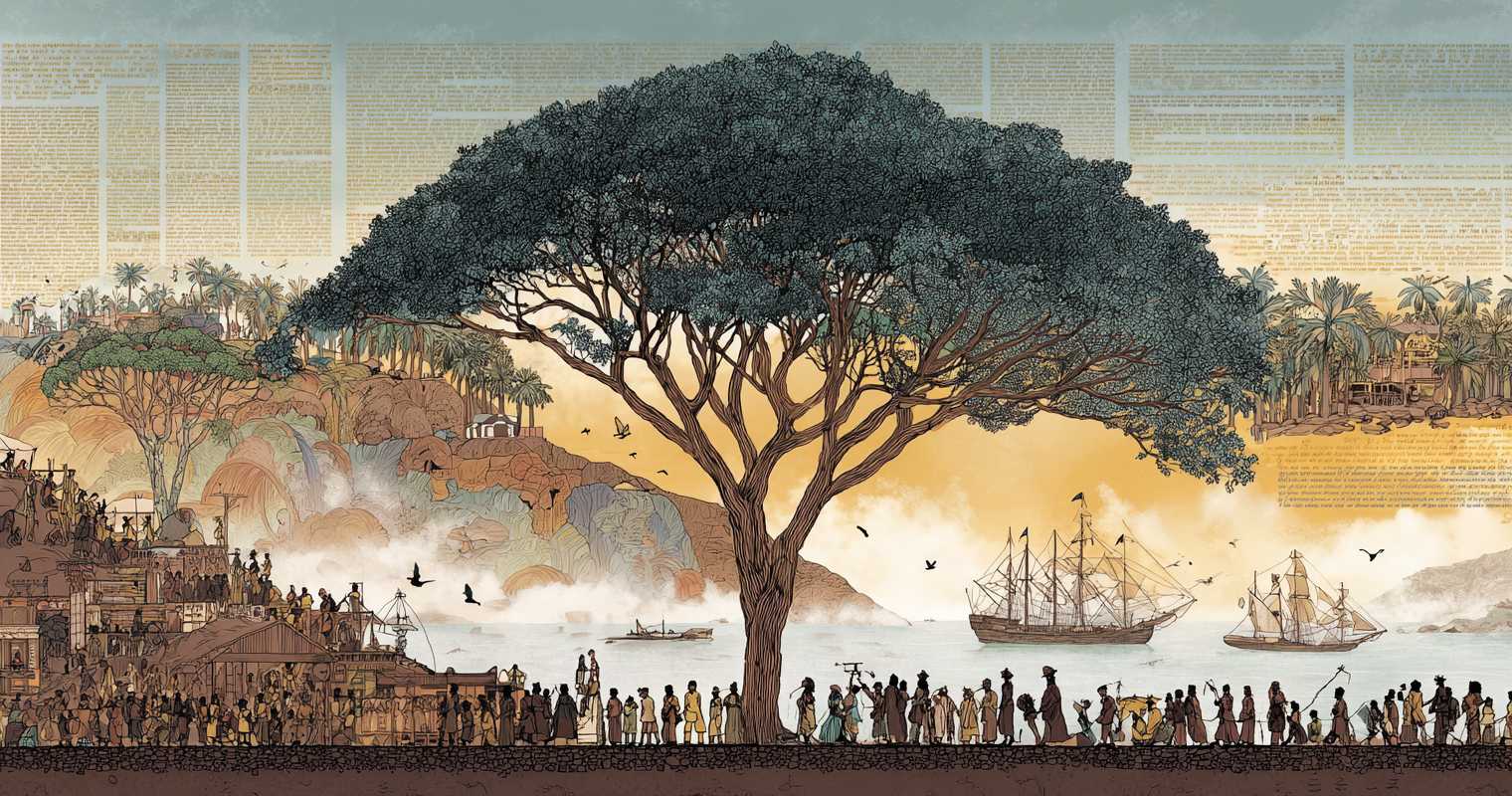
Dancing to the rhythm of samba and the spirit of celebration, the ultimate and cool Brazilian History Quiz showcases a country where culture thrives in every corner. From the bustling streets of Rio de Janeiro to the historic heart of Salvador, Brazil’s story is written in its music, colors, and traditions. Carnival parades explode with costumes and sound, while capoeira fuses dance and martial art into a uniquely expressive form. Local artisans transform simple materials into jewelry and crafts that reflect centuries of ingenuity and creativity. Culinary delights, from feijoada to pão de queijo, offer flavors that unite families and communities. Brazil’s history lives not only in monuments but in the daily vibrancy of its people.
Across the vast landscapes of the mighty Brazil, cultural expressions flourish in every region. The Amazon nurtures unique traditions that blend nature with artistry, while the southern states celebrate their heritage with folk dances and regional cuisine. Music forms a constant backdrop, from the gentle sway of bossa nova to the powerful energy of forró. Festivals mark the calendar with joy, transforming towns and cities into living museums of performance and tradition. In every neighborhood, laughter, dance, and storytelling keep history alive. These living customs give Brazil its enduring cultural heartbeat.
The Brazilian History Quiz honors a country that embraces both tradition and innovation. Schools teach music and dance as part of identity, while cultural centers preserve indigenous crafts and languages. Art galleries celebrate works that draw inspiration from Brazil’s landscapes and urban life. Culinary festivals showcase regional diversity, inviting visitors to taste history one dish at a time. Brazil’s story remains a powerful celebration of culture, resilience, and creativity.
Festivals and Cultural Traditions
Carnival stands as Brazil’s most iconic cultural celebration. Samba schools prepare elaborate performances, dazzling audiences with costumes, choreography, and electrifying music. Each parade becomes a showcase of community pride and artistic mastery. Streets fill with dance, song, and shared joy, uniting millions in one unforgettable event. Carnival represents Brazil’s cultural soul in motion.
Beyond Carnival, regional festivals highlight Brazil’s diversity. Festa Junina in the northeast blends folk music, square dances, and traditional foods. Costumed dancers celebrate rural traditions under vibrant banners and glowing lanterns. These festivals bring entire communities together, transforming local customs into national treasures. Through these celebrations, Brazil’s cultural wealth flourishes.
Traditional rituals also shape Brazilian life. From neighborhood block parties to artisan markets, small gatherings sustain cultural identity. Handmade crafts, storytelling sessions, and local music keep history relevant and accessible. Each event deepens the link between past and present. Brazil’s traditions remain vibrant through participation and pride.
Cuisine and Daily Life
Brazilian cuisine reflects its cultural and regional diversity. Feijoada, a rich stew, unites friends and family in lively gatherings. Street vendors serve pão de queijo and coxinhas, turning simple snacks into beloved staples. Every dish carries history, shaped by tradition and shared experience. Food in Brazil nourishes both body and community.
Markets create daily cultural encounters. Shoppers explore stalls offering tropical fruits, fresh seafood, and regional delicacies. Vendors share recipes and culinary wisdom passed down through generations. These exchanges turn shopping into cultural education. In Brazil, food remains a bridge between heritage and modern life.
Daily rituals celebrate connection. Families linger over meals, neighbors exchange dishes, and coffeehouses buzz with conversation. These moments form the foundation of Brazilian culture. Hospitality transforms every interaction into an affirmation of community. Brazil’s daily life embodies joy in simple, shared traditions.
7 Fun Facts About Brazilian History Quiz
- Carnival is one of the largest cultural events in the world, attracting millions of participants each year.
- Brazil is home to capoeira, a unique blend of martial arts, dance, and music.
- The country has over 2,000 officially recognized folk festivals annually.
- Feijoada is considered Brazil’s national dish and is enjoyed in every region.
- The Amazon hosts many indigenous cultural festivals celebrating traditional crafts and music.
- Samba was recognized as an important part of Brazil’s cultural heritage.
- Brazilian street markets are cultural hubs, blending commerce with storytelling and tradition.
7 Serious Facts About Brazilian History Quiz
- Brazil is the largest country in South America, influencing its cultural diversity and traditions.
- Portuguese is the official language and a unifying cultural force.
- Brazil’s art scene includes globally renowned movements such as Tropicalia and Modernismo.
- Regional cuisines reflect influences from indigenous, African, and European traditions.
- The Festa Junina festival dates back centuries and celebrates rural heritage and agriculture.
- Samba schools function as community organizations, preserving culture and training new performers.
- Brazil invests in cultural centers and museums that protect and promote its artistic legacy.
Brazilian History – FAQ
Art, Music, and Literature
Brazilian art mirrors the country’s dynamic spirit. From intricate indigenous pottery to bold modernist paintings, creativity thrives across the nation. Cities like São Paulo and Rio house galleries that showcase both emerging talent and historic works. Murals brighten urban landscapes, turning streets into living exhibitions. Art in Brazil tells stories of identity, diversity, and imagination.
Music defines Brazil’s cultural voice. Samba’s syncopated beats ignite celebrations, while bossa nova offers smooth, poetic melodies. Forró fills dance halls with energetic rhythms, inspiring social connection. Musicians experiment with traditional instruments, blending old and new. Every song becomes a celebration of cultural expression.
Brazil’s literature deepens its cultural legacy. Authors capture the essence of the nation through stories rooted in community, landscape, and language. Literary festivals encourage public engagement with poetry, novels, and folklore. Reading connects generations, ensuring history remains alive in words. Through literature, Brazil shares its soul with the world.
During Brazil’s military dictatorship (1964-1985), key figures such as General Emílio Garrastazu Médici and General Ernesto Geisel held power. This period was marked by political repression, censorship, and human rights violations.
Brazil’s economy has undergone significant transformations, transitioning from agrarian-based to industrialized, and now focusing on sectors like agriculture, mining, and services. Despite economic challenges, Brazil remains a major player in the global economy.
